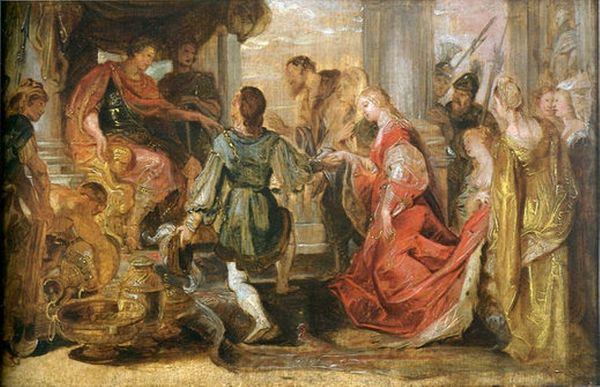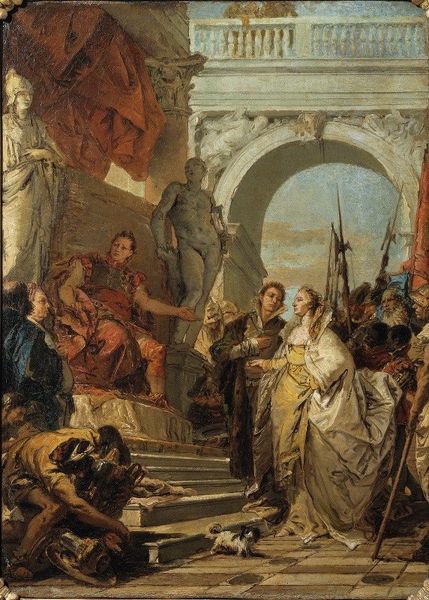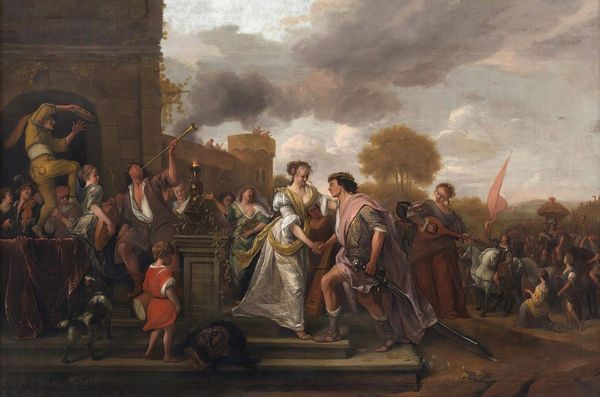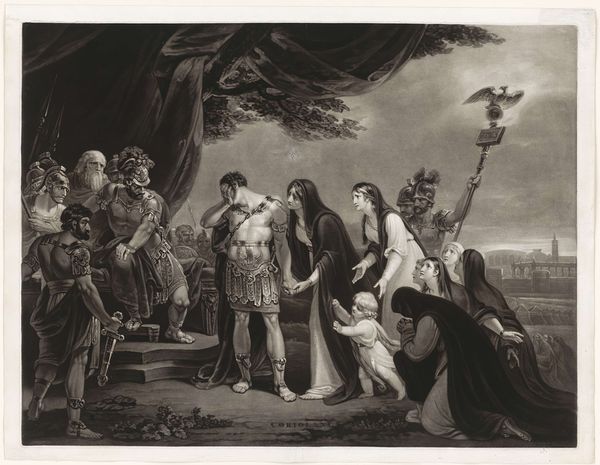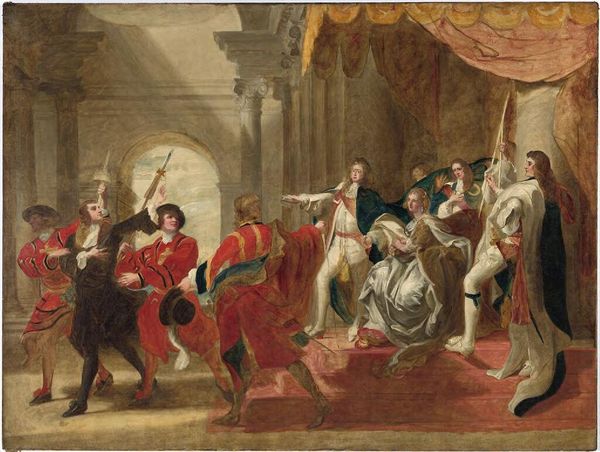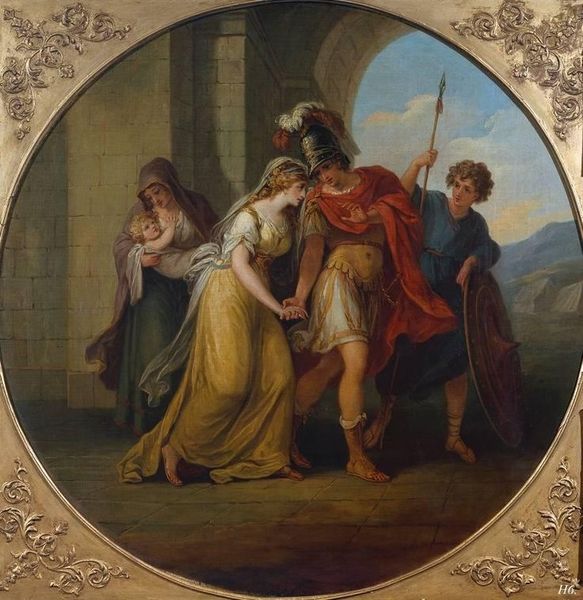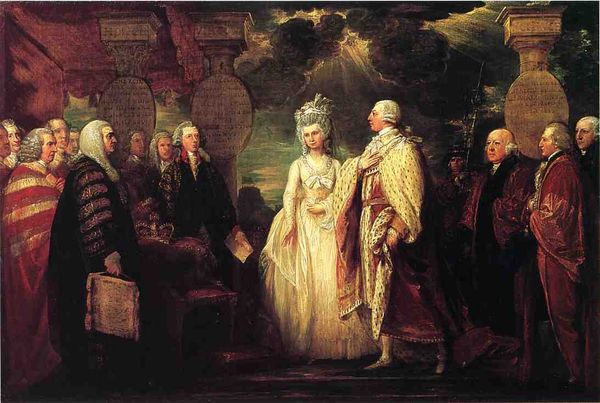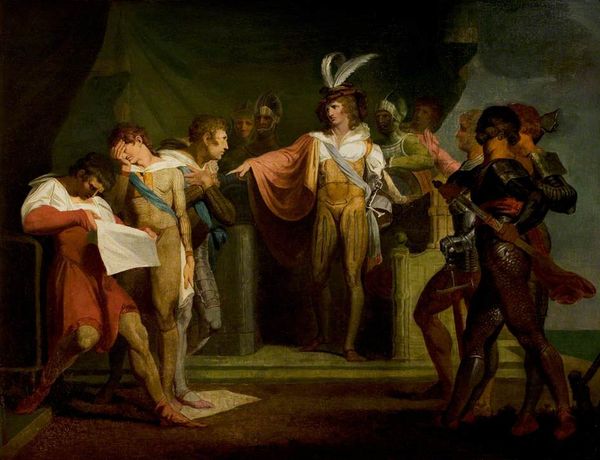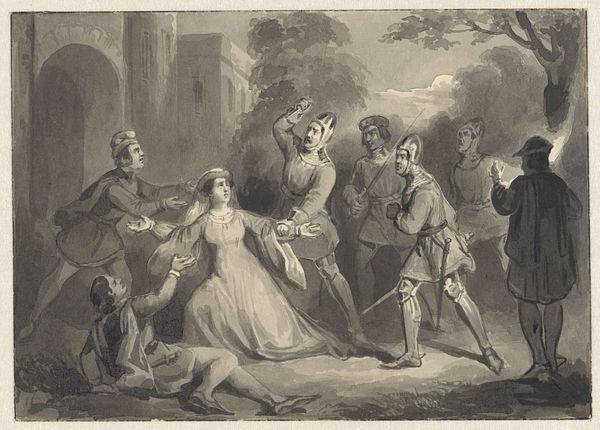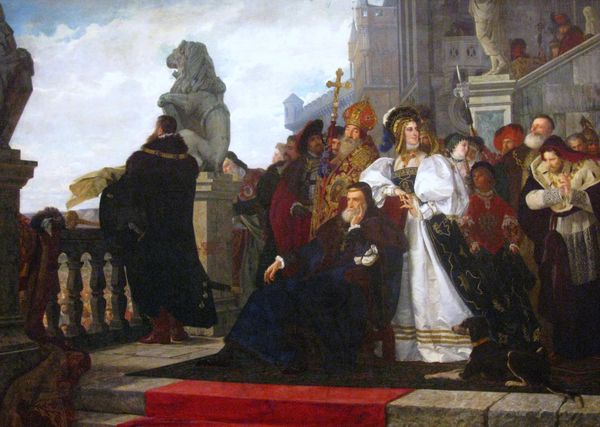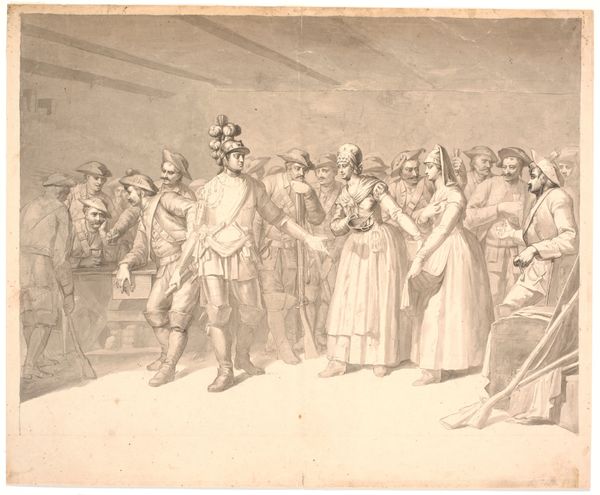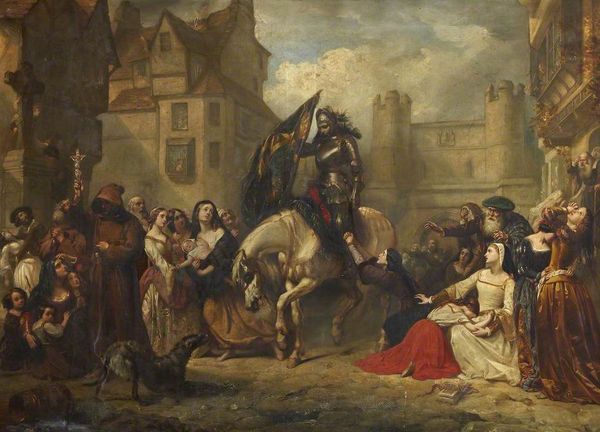
oil-paint
#
portrait
#
baroque
#
oil-paint
#
figuration
#
oil painting
#
history-painting
Copyright: Public domain
Benjamin West painted "The Burghers of Calais" sometime in the late 18th or early 19th century. It represents a moment in the Hundred Years' War when six citizens offered their lives to Edward III of England in exchange for sparing their city. The image uses visual codes to speak to British national identity. West was the president of the Royal Academy, and his work supported its mission to elevate British art. The depiction of Edward as merciful and just, contrasted with the ragged but noble burghers, flattered British virtues. The painting invites reflection on the nature of heroism and sacrifice. The painting's theatrical composition, with its emphasis on emotional expression and moral virtue, reflects the values of the Enlightenment. Studying the Royal Academy's records, letters, and exhibition catalogs will reveal how the image was intended to shape public opinion and contribute to the cultural project of nation-building. This reminds us that the meaning of art is always tied to its historical and institutional context.
Comments
No comments
Be the first to comment and join the conversation on the ultimate creative platform.
